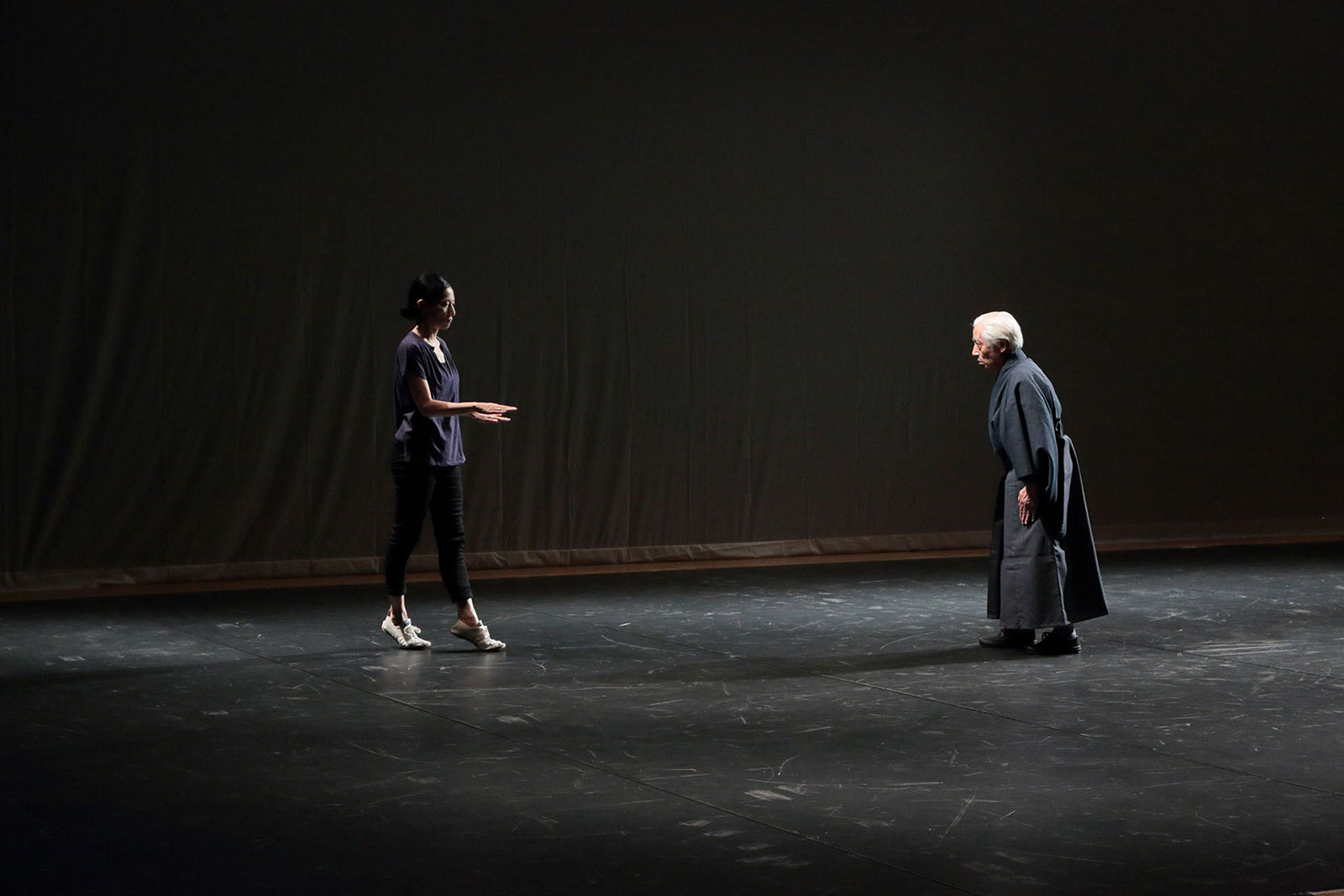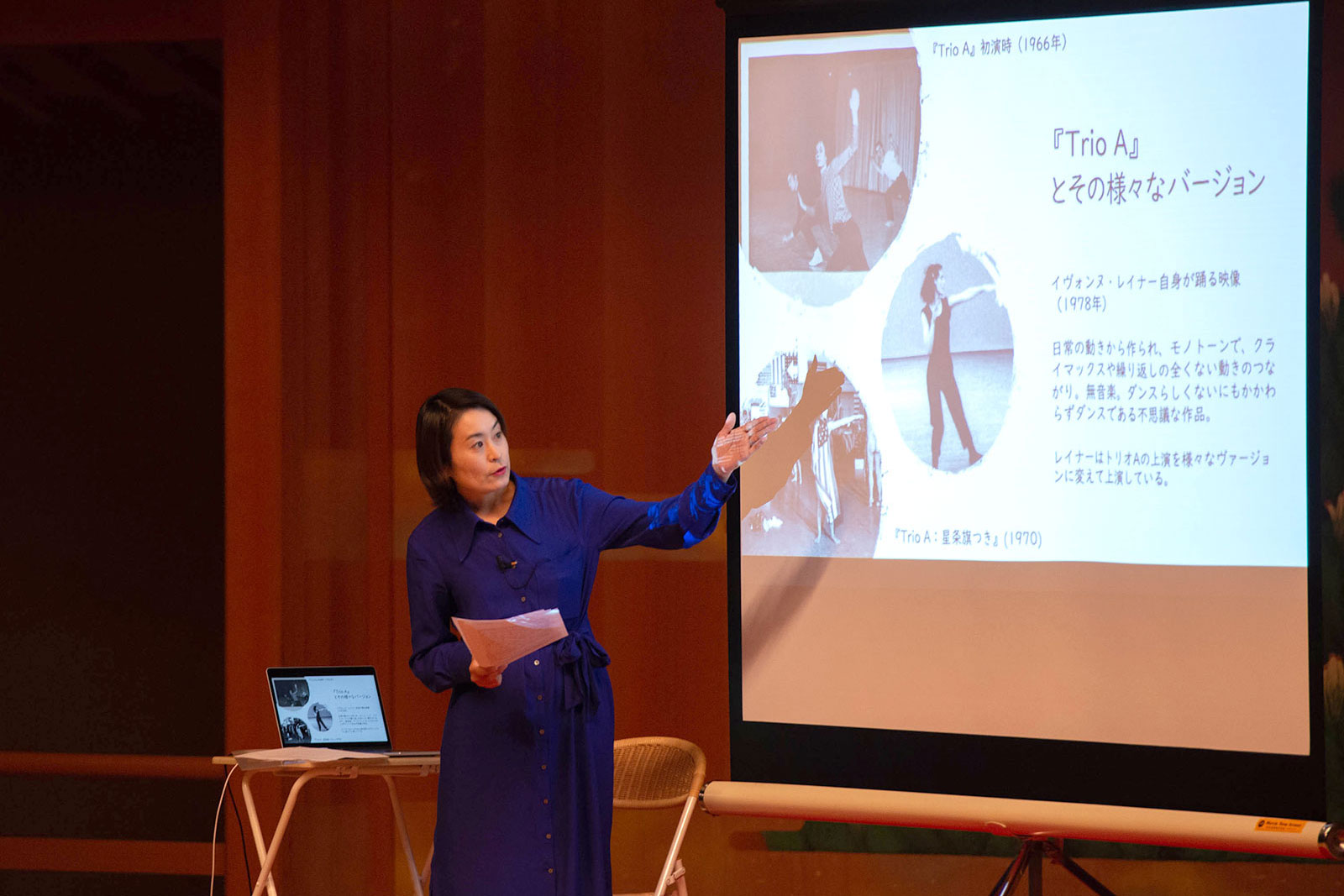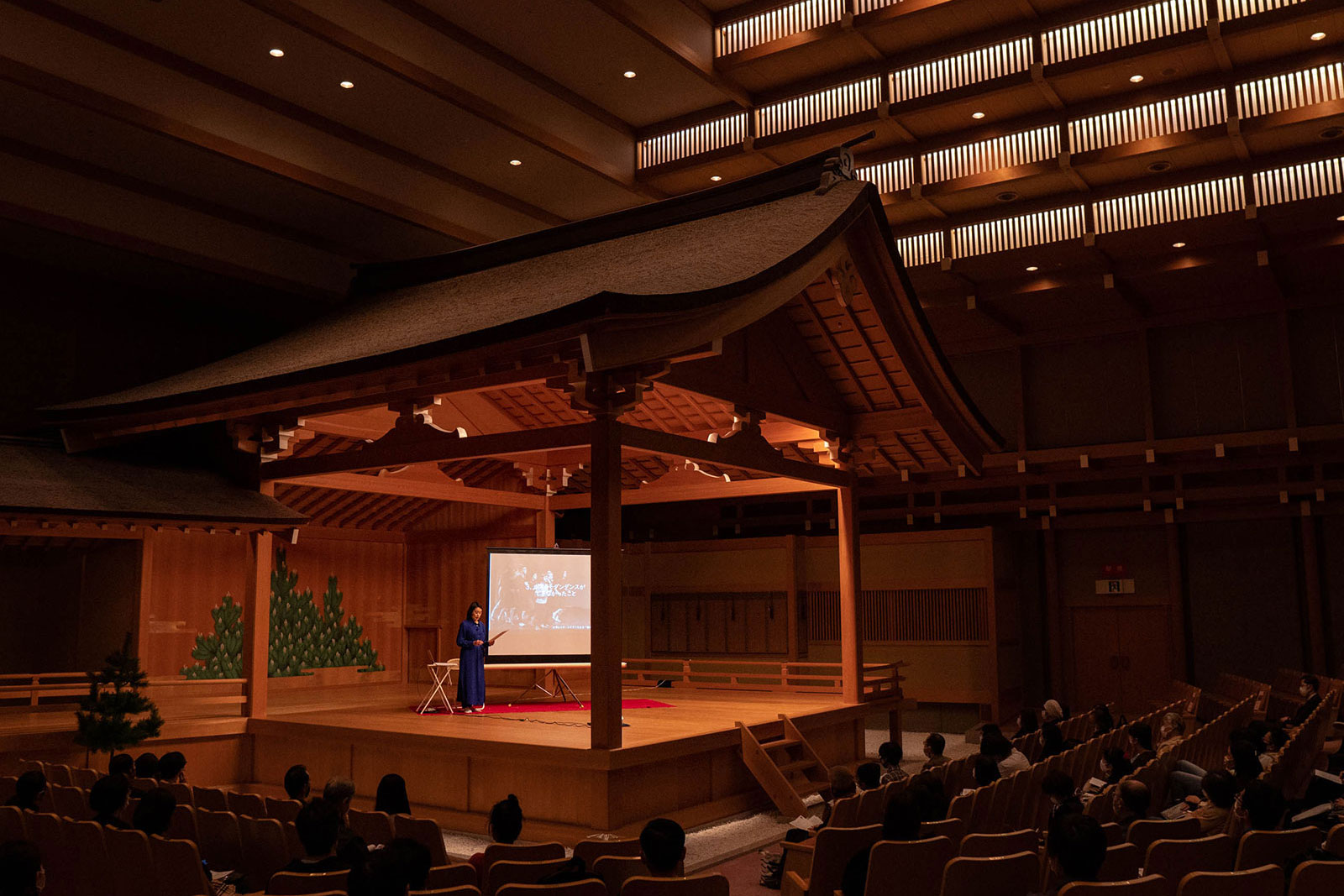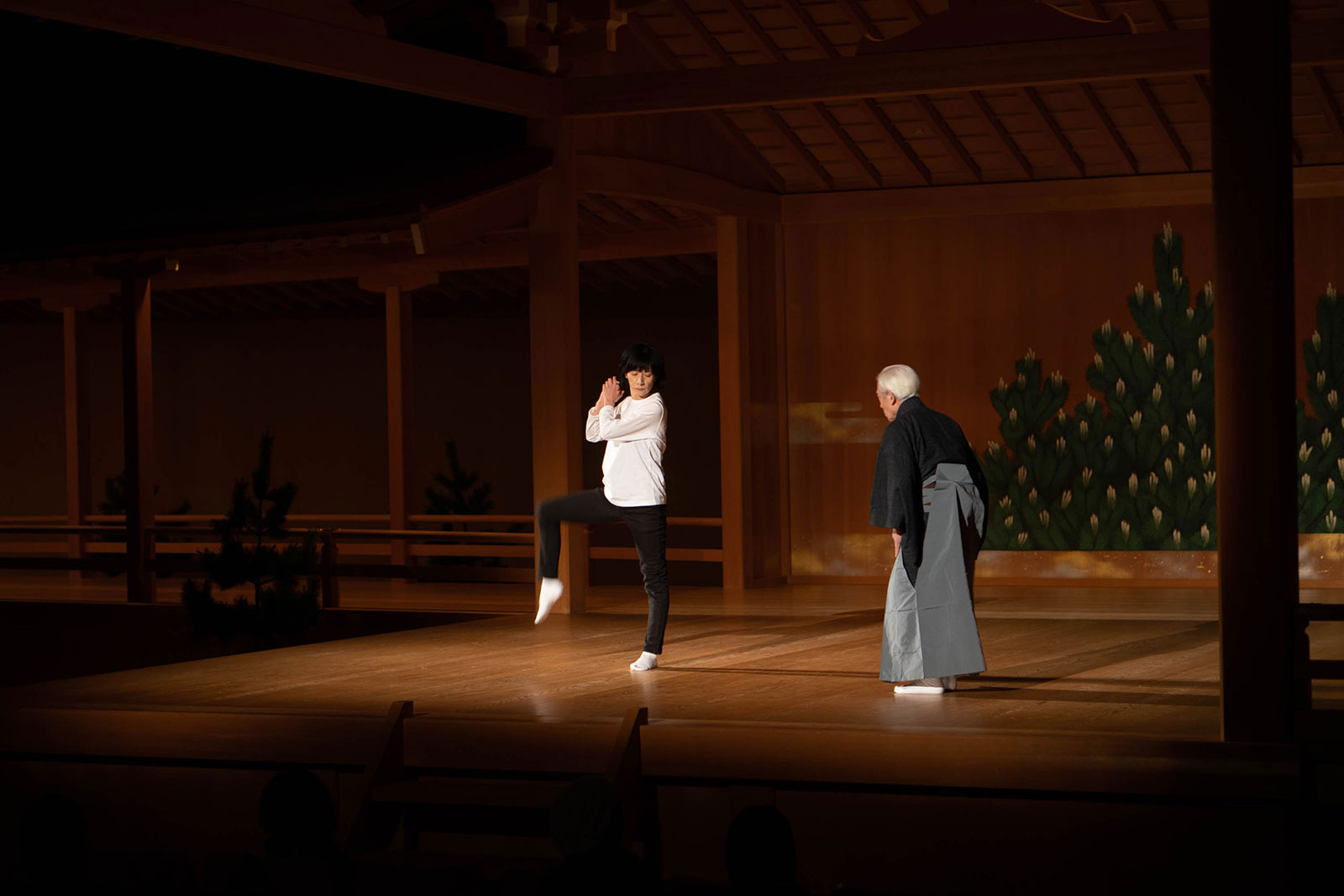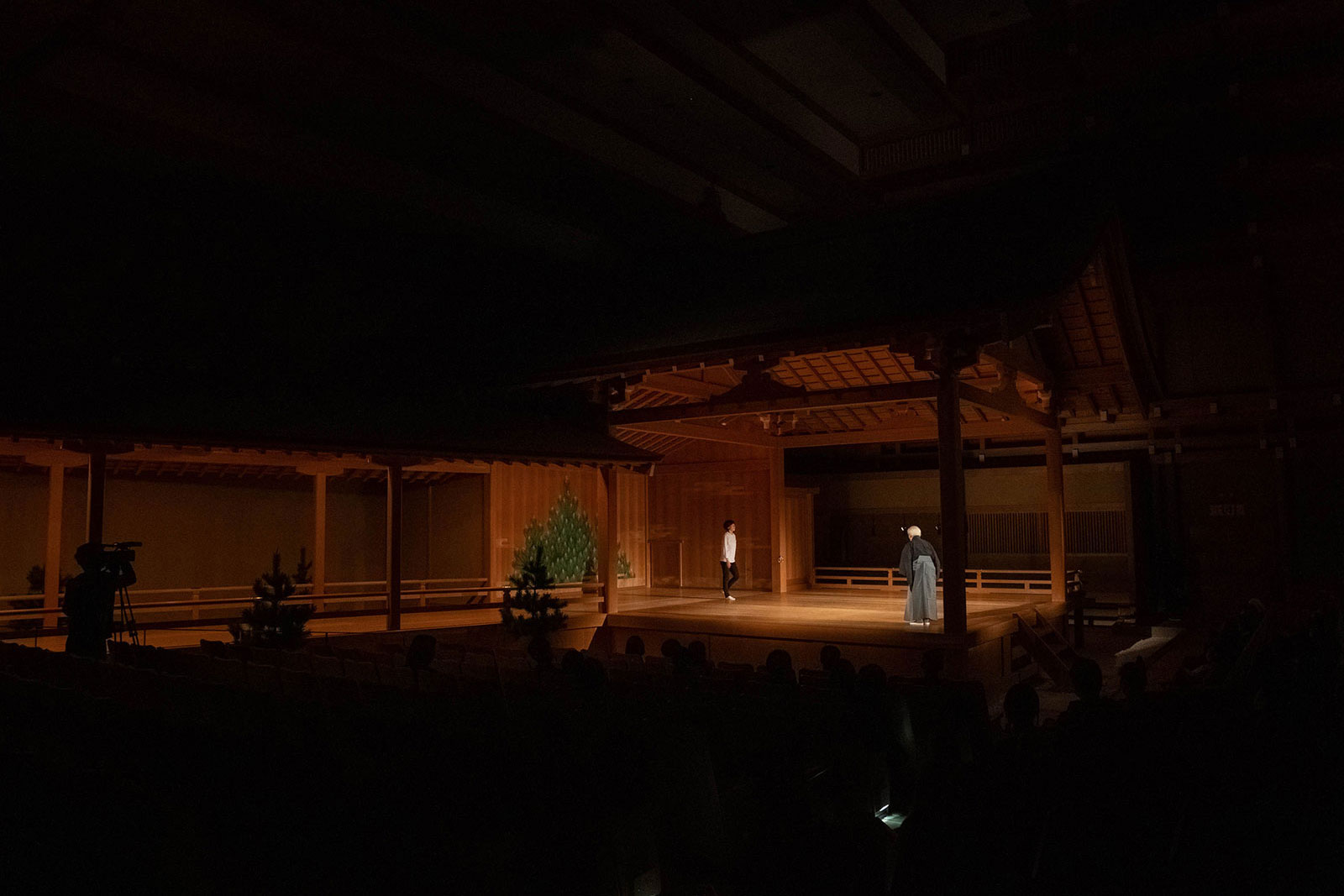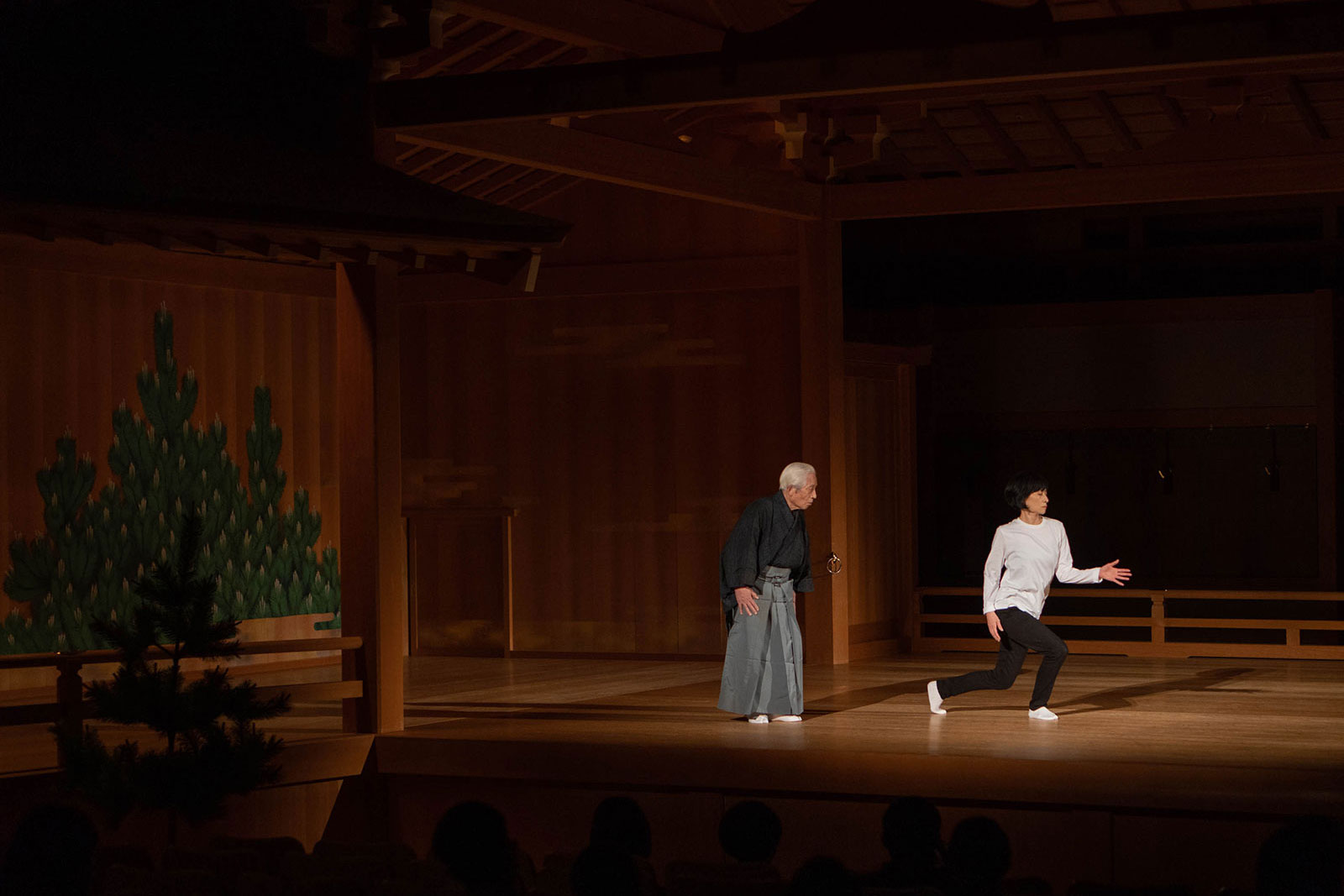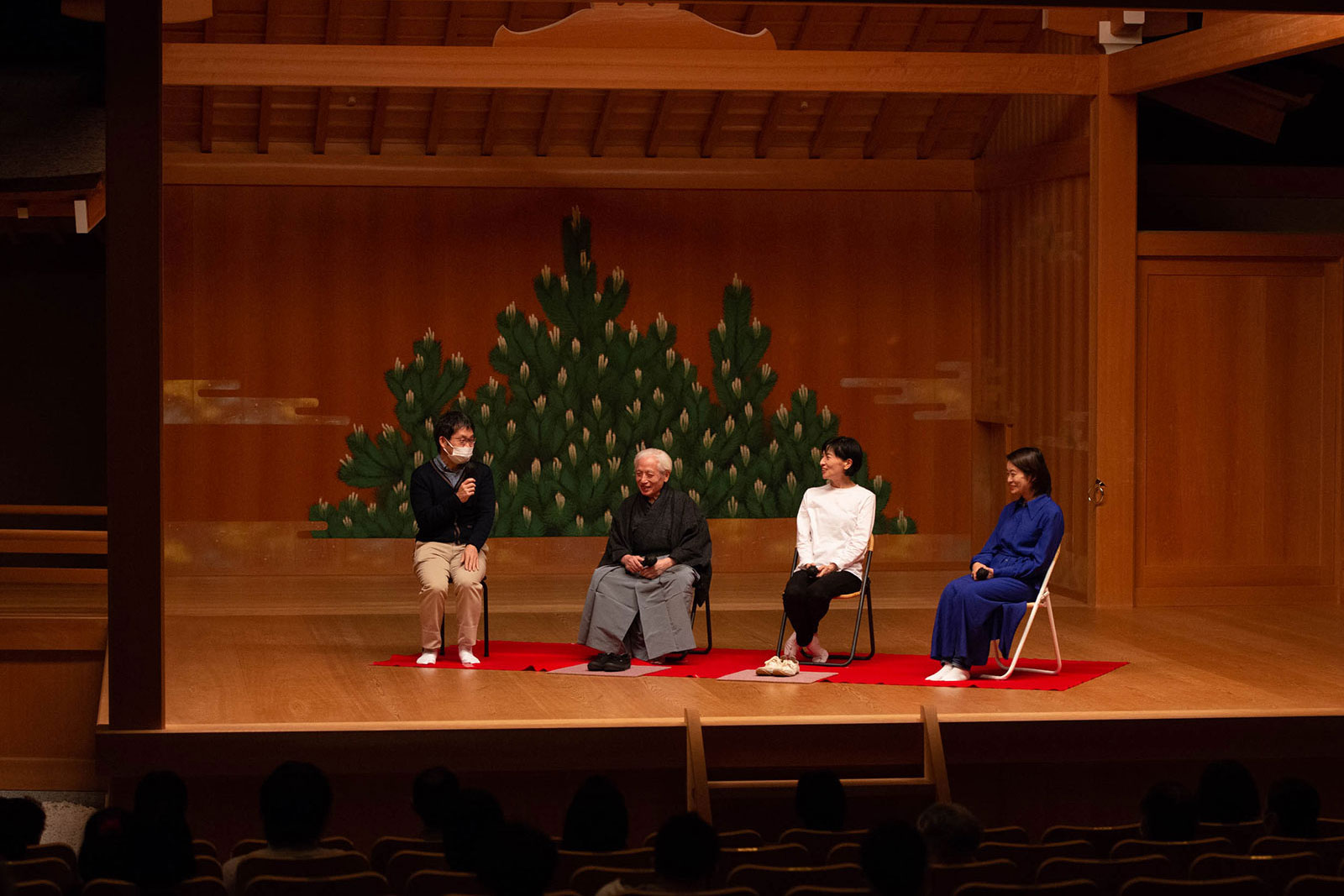Nakajima Nanako Special Talk + Performance
“No(h) to Trio A”
Talk
TALK [Nagoya Castle Area]
- Date:
- November 17th Wed. 19:00-20:15
- Venue:
- Nagoya Noh Theater
- Capacity:
- First 200 persons
- Lecture:
- Nakajima Nanako
- Performance:
- Takabayashi Koji (Kita school Noh actor)
Terada Misako (Dancer, Choreographer)
Lecture + Performance
ステートメント
─ Is Dance Also Updated as We Age? ─
In 2017 in Kyoto, I presented “Trio A”, a masterpiece of American postmodern dance created by choreographer and dancer Yvonne Rainer, in Kyoto. Rainer has recently staged “Trio A: Geriatric Version” to incorporate the dancer’s ”aging” into dance. In the “Trio A” performance in Kyoto, I assigned Noh actor in Kita School Takabayashi Koji and contemporary dancer Terada Misako to perform together, thereby integrating traditional and contemporary dance in terms of age. Along with my own lecture, I will realize the performance of “Trio A” by these two dancers at Nagoya Noh Theater, which Rainer described as one of the best “Trio A”s that she has ever seen.
Guest
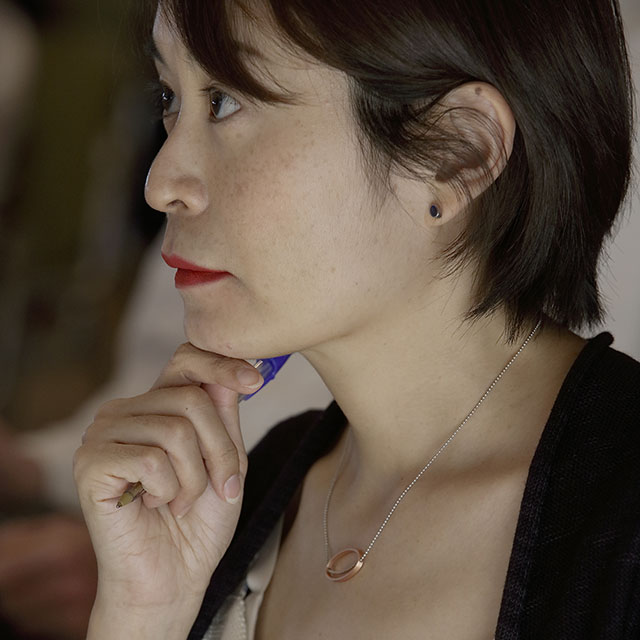
© TAIFUN
Nakajima Nanako
Dr. Nakajima is a scholar and dance dramaturg. She was a Valeska Gert Visiting Professor 2019/20, at Freie Universität Berlin. Her recent research-dramaturgy projects include “Dance Archive Boxes” (TPAM 2016), “Yvonne Rainer Performative Exhibition” (Kyoto Art Theater Shunju-za, 2017), Wang Mengfan’s piece with retired revolutionary ballet dancers at Wuzhen Theatre Festival, China, 2019. She received the Special Commendation of the Elliott Hayes Award in 2017 for Outstanding Achievement in Dramaturgy from the Literary Manager and Dramaturgs of the Americas. Her publications include Dance Dramaturgy: Modes of Agency, Awareness and Engagement (Palgrave, 2015), The Aging Body in Dance: A cross-cultural perspective (co-ed. Gabriele Brandstetter, Routledge, 2017), and currently is writing her monograph on dance dramaturgy. She recently launched a bilingual website on dance dramaturgy (https://www.dancedramaturgy.org).
Takabayashi Koji (Kita school Noh actor)
Born in Kyoto in 1935. From his infancy, he was trained only by his father, Takabayashi Ginji. In 1971 he became a Kita school Noh actor as a profession. Since April 1982, he has continued the disclosure performance “Kita School, Yousen Noh” with permission of the Kita school Noh Kyoto, which has a tradition of 400 years, and he has been making efforts to popularize Noh, maintain the tradition, and foster successors. His first stage was “Asukagawa” as Ko-kata, a child role (1938). He played three important Noh — “Sotoba Komachi”(1998), “Oumu Komachi”(2009), and “Obasute”(2012) — all three are included in Roujo-mono (an old woman appears as Shite, a protagonist). In 2016, he retired from dancing as Shite after performing “Eguchi”.
Terada Misako (Dancer, Choreographer)
Terada studied classical ballet from childhood. In 1991, she formed a dance group with Jareo Osamu and performed domestically and internationally. She received both the Next Generation Choreographer Award and Audience Award at the Toyota Choreography Award in 2002. She moved into solo performance from 2006, appearing in the work of Yamada Setsuko, Yamashita Zan, Shirai Tsuyoshi, and Kasai Akira. She has established a reputation for “high-resolution” dance that develops academic techniques in very original ways.






